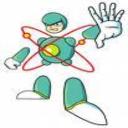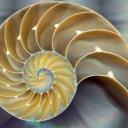PHYS 161H Lecture Notes - Lecture 8: Angular Momentum, Angular Velocity, Circular Motion
55 views11 pages
16 Mar 2016
School
Department
Course
Professor
Document Summary
Why is the center of mass moving forward at w*r : rolling cylinder: Arc length between the points is equal to the distance traveled. Also, distance on the bottom of the cylinder between points is the same as the displacement of the center of mass. Kinetic energy of the cylinder: rolling a some given w, instantaneous rotation about the contact point, k(rolling)=(1/2)(i(contact point))w^2, i(contact point)=icm+m(r^2, k(rolling)=(1/2)(icm+m*r^2)w^2, =(1/2)icm*w^2+(1/2)m*(vcm)^2, k(rotating about cm) k(translational of cm) Find the velocity at the base of the ramp, no work done by friction because the contact point is always at rest, released from rest, find vcm at the bottom, solid sphere rolling h=l*sin(theta)=(delta)y. Forces are constant, therefore, acceleration is constant (vcm,f)^2=(vcm,i)^2+2(acm)(delta(s)) (10/7)g*l*sin(theta)=0+2(acm) acm=(5/7)g*sin(theta) w=vcm/r. Angular momentum=l=r*p*sin(theta)=r(perpendicular)*p: = r*p(perpendicular, = | r x p | L=(rperpendicular)*m*v: rperpendicular is the distance of closest approach. Particle moving around a circle, uniform circular motion, v=constant.







